Please filter by different types of publications
All Scientific Publications

The Irish stoat M. erminea hibernica is a subspecies endemic to Ireland and the Isle of Man but, despite being widespread in Ireland, no information exists on its population status due to the difficulty of detection. This study compared the efficacy of two camera trap methods (the Mostela, a modified camera trapping device, and an external camera trap outside the Mostela) to detect Irish stoats in counties Mayo and Galway, Republic of Ireland. It also evaluates the potential applicability of both methods for future work to assess the population and conservation status of this little-studied species.
Photo: Irish stoat ©Carrie Crowley (Crossing the Line Films)
Download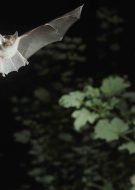
Habitat suitability models (HSM) have been used to understand the impacts of landscape-scale habitat connectivity and gene flow mostly by assuming a regular decrease in the cost of movement as habitat improves. Yet, habitat selection and gene flow are governed by different behavioural processes which may limit the reliability of this approach. This study aimed to identify the optimal relationship between gene flow and HSMs for two bat species (Myotis bechsteinii and Eptesicus serotinus) in Britain in order to inform future bat conservation studies.
Photo: ©Frank Greenaway
Download
The aim of this document is to set out a strategic, long-term recovery plan for pine martens in Britain. It follows on from a previous strategy produced in 2011 (Jordan, 2011), which outlined the practical work and research needed to restore and secure the future of pine marten populations in England and Wales up until 2020.
We present a summary of what has been achieved so far and set out a continuing recovery plan for pine martens across Britain that maintains this strategic approach, while emphasising the importance of conserving recovering populations in Scotland.
Photo: ©Robert Cruickshanks
Download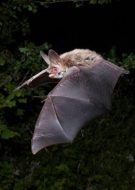
This paper uses a case study on the elusive woodland bat Bechstein’s bat (Myotis bechsteinii) to explore the effectiveness of genetic approaches as a way to monitor elusive long-lived species.
Photo: Bechstein’s bat ©Henry Schofield
Download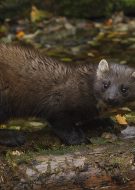
In this study, the history of the pine marten (Martes martes) in Ireland is reviewed, revealing that the population has undergone several retractions and expansions over the last few hundred years. Here, we consider the genetic legacy of this flux in fortunes and its likely impacts upon the conservation and future recovery of the species.
Photo: ©Ruth Hanniffy
Download

Since 2015, VWT has been involved in pine marten translocations from Scotland for population restoration in Wales and, more recently, Gloucestershire. A primary consideration in these translocations has been to minimise the potential for negative impacts on recovering donor populations in Scotland. To this end, surveys and monitoring have been carried out to collect further data to inform the way in which current and future sustainable harvesting models are applied. Based on precautionary principles, VWT adopted a highly conservative approach to trapping and removals in the first instance. Data on indices of marten activity at donor sites to date suggest that this has proved effective, and population estimates derived from genetic analysis of non-invasively collected samples support the suggestion that only a relatively small proportion of resident animals have been removed. However, the sampling strategy could be improved to refine population estimates further and better inform the way in which donor populations are managed and conserved in the face of higher demand from other organisations in future.
Download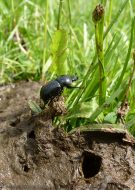
This quantitative meta-analysis of 22 studies documents the non-target effects of endectocide residues on dung-dwelling organisms, such as the Aphodiine dung beetle and provides evidence on the consequences of different application methods, and the need for standardised methodological techniques in future studies.
Photo: Aphodius fossor @British Scarabs CC BY-NC-ND
Download

As part of a national recovery programme for the pine marten Martes martes, a protected mesocarnivore in the UK, we used Q-methodology to understand the perspectives of residents living in an area in which a pine marten translocation project was planned.
Download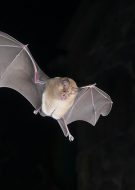
Using a Before-After-Control-Impact phantom road experimental
design, we examine the impacts of traffic noise on bat activity and feeding behaviour.
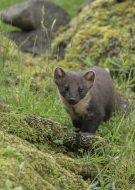
We used radio-tracking to describe post-release movement and habitat selection of pine martens translocated from Scotland to Wales.
Download